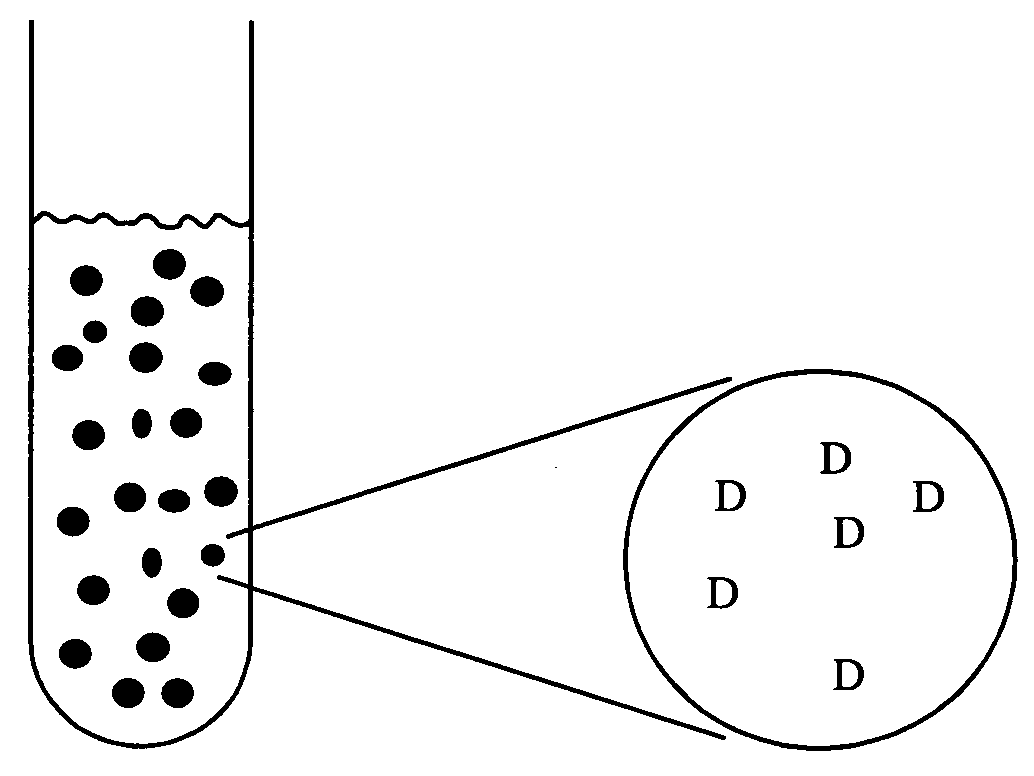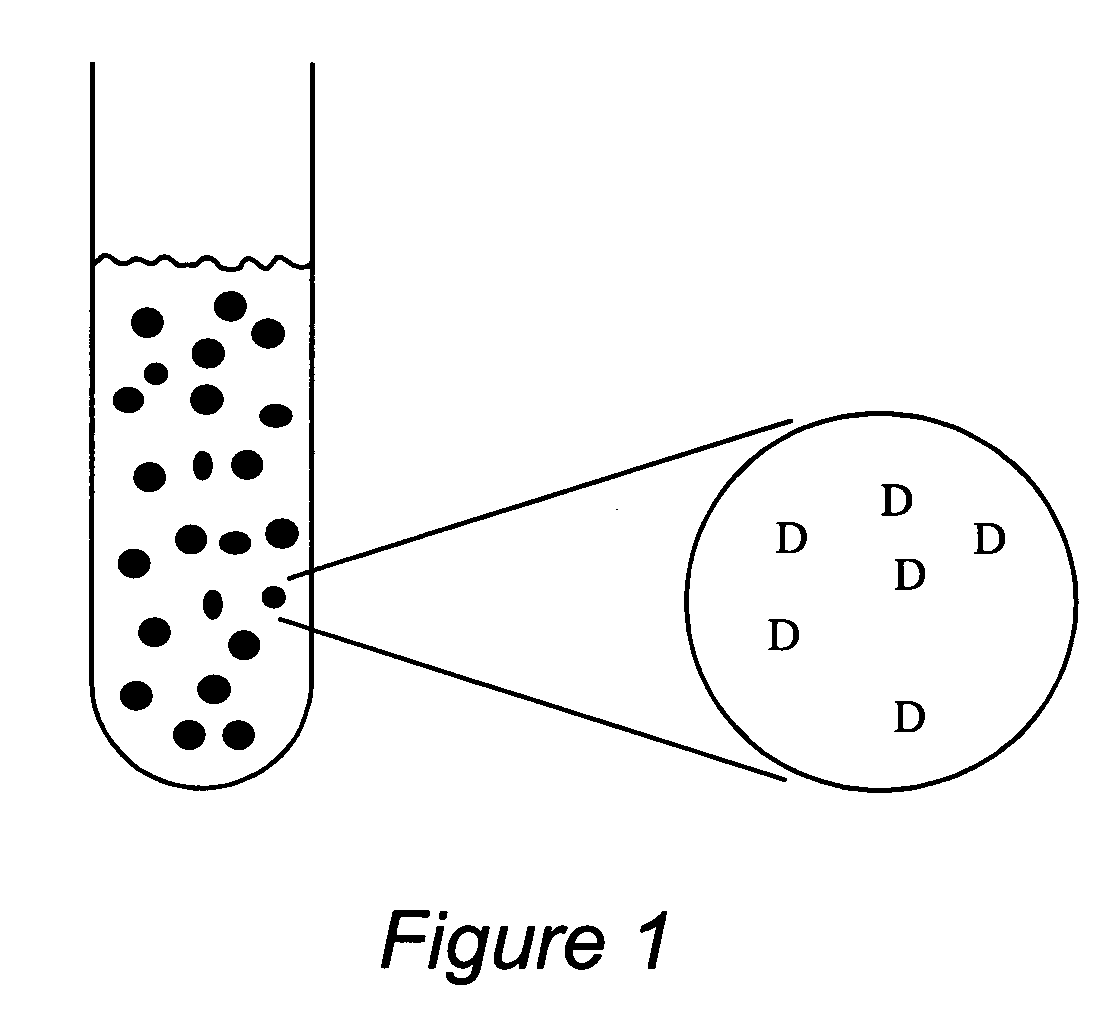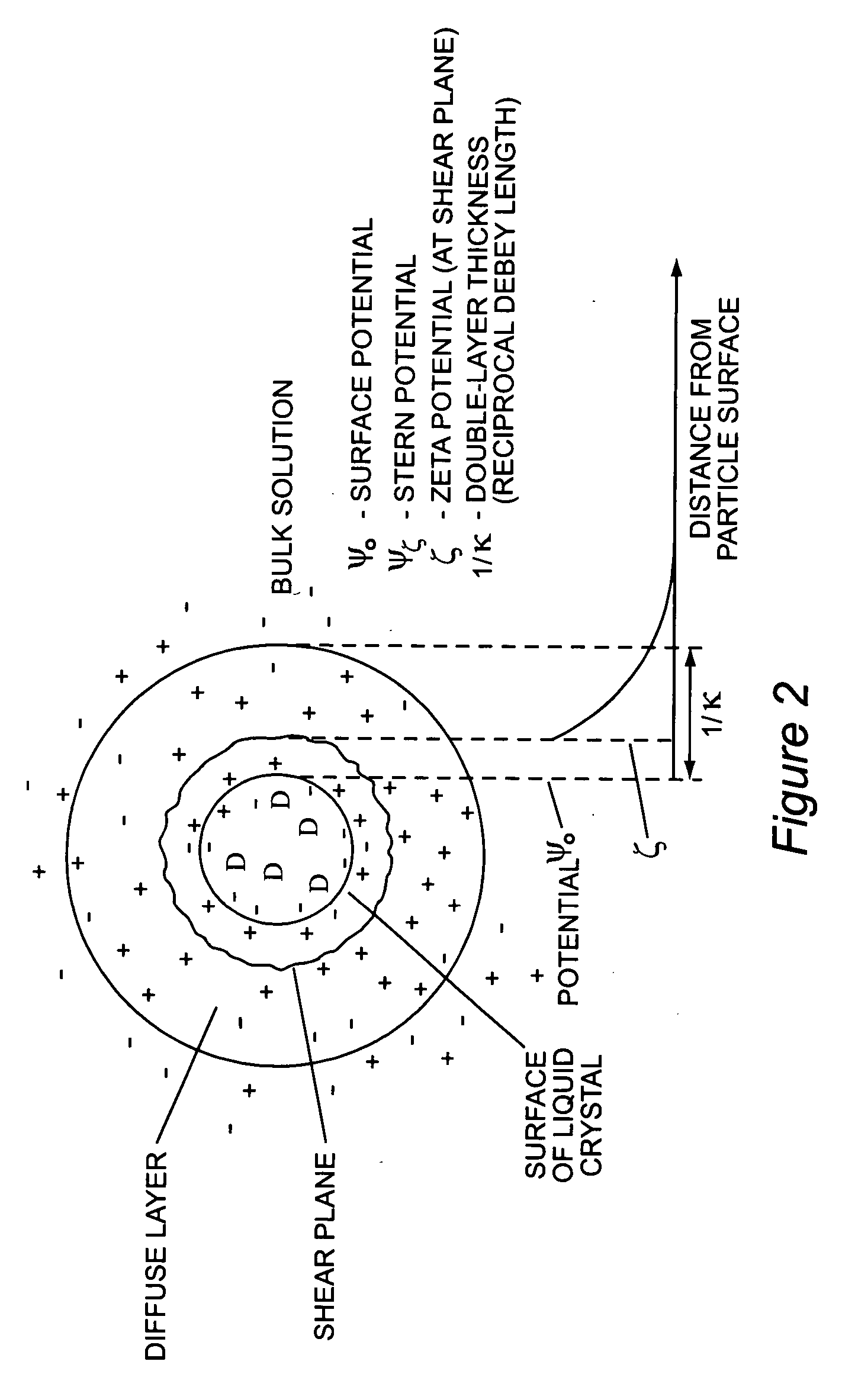Stabilized uncoated particles of reversed liquid crystalline phase materials
a technology of liquid crystal phase materials and uncoated particles, which is applied in the direction of drug compositions, detergent compositions, immunological disorders, etc., can solve the problems of largely untapped potential, achieve high potential for transporting active compounds, improve solubility and sequestration, and improve the effect of solubility
- Summary
- Abstract
- Description
- Claims
- Application Information
AI Technical Summary
Benefits of technology
Problems solved by technology
Method used
Image
Examples
example 1
[0159] A reversed cubic phase containing the anesthetic propofol was first prepared by mixing 0.952 grams (gms) of propofol (obtained from Albemarle Corporation), 1.308 gm of distilled water (all references to water in this section mean distilled water), and 2.756 gm of the surfactant Pluronic L122 (obtained from Ethox Corporation). After thoroughly mixing this composition, it was checked that the material was optically isotropic and of high viscosity. Next, 0.319 gm of the anionic surfactant sodium docusate (also known as Aerosol OT, or simply AOT) was dissolved in 100 ml of water, Then 1.088 gm of the cubic phase was added to a 100 ml beaker containing 20 ml of the surfactant solution, and the mixture homogenized using a Brinkmann PT 10 / 35 homogenizer, after which the homogenized dispersion was microfluidized in a Microfluidics Model 110 L high-pressure microfluidizer, using three runs of 30 seconds each at approximately 10,000 psi. Observation in an Olympus BHC phase contrast mic...
example 2
[0162] The general anesthetic and hypnotic agent propofol, in the amount 0.57 grams, was combined with 0.78 gm sterile water and 1.65 gm of Pluronic L122 (in which the weight fraction of polyoxyethylene chains is 20%), working in a laminar flow hood. After mixing this to form a reversed cubic phase, 0.105 gm of sodium deoxycholate were dissolved in 40 ml of sterile water. An amount 2.1 gm of the cubic phase were then dispersed in the 40 ml of solution, first using the Brinkmann homogenizer, then using the Microfluidics microfluidizer for a total of 15 minutes of high-pressure microfluidization. The dispersion, referred to below as “Lyotropic / PF1”, was filtered with a 0.8 micron syringe filter before using in the animal tests described in Example 4 below.
[0163]FIG. 4 shows the zeta potential distribution measured for this dispersion. The average zeta potential, namely about −48 mV, is greater in magnitude than 30 mV and thus consistent with stabilization due primarily to the surface...
example 3
[0165] Propofol, in the amount 0.57 grams, was combined with 0.78 gm sterile water and 1.65 gm of Pluronic P123 (in which the weight fraction of polyoxyethylene chains is 30%), working in a laminar flow hood. After mixing this to form a reversed cubic phase, 0.105 gm of sodium deoxycholate were dissolved in 40 ml of sterile water. An amount 2.1 gm of the cubic phase were then dispersed in the 40 ml of solution, first using the Brinkmann homogenizer, then using the Microfluidics microfluidizer for a total of 15 minutes of high-pressure microfluidization. The dispersion, referred to below as “Lyotropic / PF4” was filtered with a 0.8 micron syringe filter before using in the animal tests described in Example 4 below. DELSA analysis shown a unimodal zeta potential distribution centered at approximately −36 mV.
PUM
| Property | Measurement | Unit |
|---|---|---|
| zeta potential | aaaaa | aaaaa |
| zeta potential | aaaaa | aaaaa |
| zeta potential | aaaaa | aaaaa |
Abstract
Description
Claims
Application Information
 Login to View More
Login to View More - R&D
- Intellectual Property
- Life Sciences
- Materials
- Tech Scout
- Unparalleled Data Quality
- Higher Quality Content
- 60% Fewer Hallucinations
Browse by: Latest US Patents, China's latest patents, Technical Efficacy Thesaurus, Application Domain, Technology Topic, Popular Technical Reports.
© 2025 PatSnap. All rights reserved.Legal|Privacy policy|Modern Slavery Act Transparency Statement|Sitemap|About US| Contact US: help@patsnap.com



